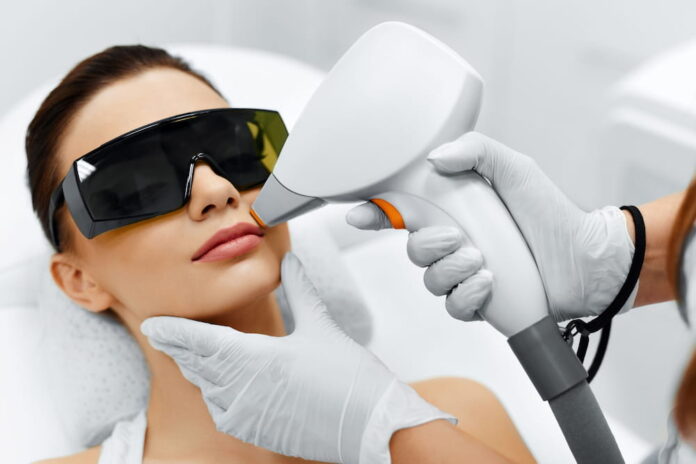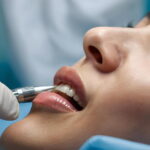Key Takeaways:
– Evaluating the pros and cons of various techniques.
– Learning about how to prepare for and maintain after facial hair removal.
The Basics of Facial Hair Growth
Understanding facial hair growth is fundamental to choosing the right hair removal approach. Hair grows in cycles, which include the active growing anagen phase, the transitional catagen phase, and the resting telogen phase. Factors such as hormones, genetics, and age can influence hair growth cycles, thus affecting how hair removal results vary among individuals. Due to these phases, timing is critical when scheduling hair removal treatments; catching the hair in the correct phase can enhance the procedure’s effectiveness, whether waxing, shaving, or considering treatments.
Preparing Your Skin for Hair Removal
Proper skin preparation is essential for achieving optimal laser facial hair removal results. A gentle exfoliating scrub can help eliminate dead skin cells and prevent ingrown hairs, particularly important for facial areas. Suppose you’re looking for laser facial hair removal near me. In that case, it is recommended that you do your research and choose a reputable provider with good reviews and experienced practitioners to ensure the best possible care and outcomes. Hydrating your skin before laser hair removal makes the hair more flexible and reduces the likelihood of breakage during treatment. Additionally, avoiding sun exposure before laser treatments is advisable to reduce the risk of irritation and protect the skin’s surface integrity. Properly preparing your skin can make the laser hair removal process more comfortable and enhance the results, leading to smoother, clearer facial skin after the treatment.
Aftercare: Maintaining Your Silky Smooth Skin
The importance of aftercare in hair removal cannot be understated—it involves practices that can significantly extend the pristine condition of the just-treated skin. After any form of hair removal, applying is recommended to calm this recommended e skin and reduce redness and swelling. It is also advisable to avoid heavy makeup for a few days following the procedure because it can clog pores and lead to breakouts on vulnerable skin. Clothing and skincare products should be non-comedogenic and breathable to help maintain the newly smooth skin.
Choosing the Right Method for Your Skin Type
Each skin type responds differently to hair removal methods, making the treatment choice highly personal. Those with sensitive skin might find that techniques such as threading or sugaring, which are less abrasive, suit their skin better to avoid irritation. Individuals with thicker or coarser hair might lean towards laser treatments or waxing, which can offer more durable results. The key is understanding your skin’s reactions and tolerance levels to avoid redness, bumps, or other issues that might arise from unsuitably harsh techniques.
Natural and DIY Solutions
In addition to commercial options, natural and DIY solutions for hair removal have gained traction among those seeking gentler and more eco-friendly alternatives. Ingredients such as lemon juice, honey, and sugar can create homemade waxes that are kinder to the skin and the environment. These mixtures can be applied similarly to salon waxes but with the peace of mind that comes from fully knowing the content of the product. While relatively less effective than professional treatments, natural solutions can be viable for those with light hair removal needs or sensitive skin.
Understanding Hair Removal Technologies
New technologies have reshaped the facial hair removal landscape. Laser treatments and IPL devices are touted for their ability to permanently minimize hair growth. These treatments target the hair’s pigment, destroying the follicle’s ability to regenerate, potentially leading to a permanent reduction in hair density and thickness. While the initial cost is higher than traditional methods, investing in these technologies can ultimately save time and resources for those seeking long-term solutions.
Common Mistakes to Avoid
Even with the best intentions, mistakes during hair removal jeopardize results and skin health. Skipping patch tests, especially with new products, can lead to severe allergic reactions. Inadequate aftercare and using unsanitary tools are other frequent errors that can cause discomfort and possible infections. Moreover, following specific aftercare instructions, such as avoiding the sun or certain skincare ingredients post-procedure, can also detract from the overall effectiveness of hair removal and compromise the quality of your skin.
Future Trends in Facial Hair Removal
With the advancement of technology and understanding of skincare, the future of facial hair removal seems promising. Continuous research is being conducted to develop more accurate and less painful methods. Innovations in the efficacy of natural ingredients also suggest that more sustainable and skin-friendly options will be available. Tracking the latest trends ensures access to effective facial hair removal solutions.
Did you find this helpful? Check out our other helpful articles on our website.
Read Also
- Ketamine-Assisted Therapies: Impacts on Employee WellbeingWorkplace stress is common today. Many employees feel tired, anxious, or burned out. Regular therapy can help, but some people need more support. Ketamine-assisted therapy is showing good results for mental health. A ketamine-assisted therapist guides each session safely. This therapy can improve mood, focus, and energy. Learning more about it can help teams stay… Read more: Ketamine-Assisted Therapies: Impacts on Employee Wellbeing
- The Future of Men’s Health: Why Telehealth Is Here to StayTelehealth isn’t just a pandemic trend that faded into the background. For Australian men, it has become one of the most practical, time-saving, and stress-free ways to manage everyday health — and it’s shaping the future of how we access care. Platforms like DOCTO, an Australian online doctor and specialist telehealth service, are leading the… Read more: The Future of Men’s Health: Why Telehealth Is Here to Stay
- How to Build a Simple, Clean Skincare Routine ?You don’t need a complicated skincare routine. It doesn’t have to be something that requires twenty different products and confusing steps. Your routine works well with just a few high-quality clean ingredients. The beauty industry keeps pushing more products, but your skin actually needs less. You only need a simple approach to get better results… Read more: How to Build a Simple, Clean Skincare Routine ?
- How Preventive Dental Care Supports Overall HealthHave you ever wondered how a simple dental checkup could impact your entire body? Oral health is more than just a bright smile. Studies show that poor dental habits can contribute to serious health problems. Gum disease and tooth decay are linked to heart disease, diabetes, and infections. Yet, many people overlook preventive dental care.… Read more: How Preventive Dental Care Supports Overall Health
- Seeing Clearly in a High-Tech World: A Deep Dive into Advanced Vision Care ServicesProtecting your eyesight isn’t optional—it’s essential. Modern eye care has evolved far beyond basic exams, offering advanced diagnostics, personalized treatments, and surgical innovations that keep vision sharp for life. A leading example is Intermountain Eye Center, home to specialists like Dr Fishburn Boise, where patients receive comprehensive, high-level vision care designed to preserve long-term eye… Read more: Seeing Clearly in a High-Tech World: A Deep Dive into Advanced Vision Care Services
- Why the Keto Diet Works for Some People—and Fails Dramatically for Others: An Ayurvedic Breakdown for Modern HealthcareThe keto diet has dominated weight-loss culture for years. For some people, it produces rapid fat loss, stable energy, and improved mental clarity. For others—especially those who gain weight easily—it leads to burnout, digestive distress, rebound weight gain, high cholesterol, and a metabolism that feels slower than before. Healthcare often frames this as a discipline… Read more: Why the Keto Diet Works for Some People—and Fails Dramatically for Others: An Ayurvedic Breakdown for Modern Healthcare
- How to Choose the Best Assisted Living Facility for SeniorsAre you looking for the right assisted living facility for a senior loved one? Choosing a place can feel overwhelming. There are many factors to consider, from care services to the environment. Safety, comfort, and social opportunities play important roles in daily life. Each senior has unique needs and preferences that must be met. Understanding… Read more: How to Choose the Best Assisted Living Facility for Seniors
- Burn Smart, Not Hard; Shape Burn: Clean Protein for Weight ManagementYou want to feel light, strong, and confident. You don’t want crash diets or fake promises. You need a plan that works with your body, not against it. That’s where Shape Burn comes in. You can burn fat without losing strength. You can eat better and stay full. You can manage weight in a way… Read more: Burn Smart, Not Hard; Shape Burn: Clean Protein for Weight Management









